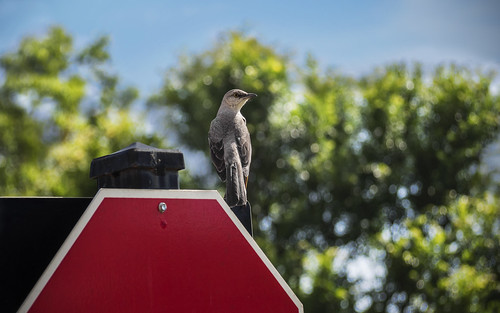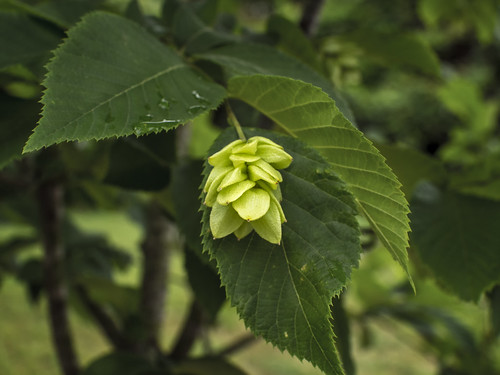Convergent evolution?
The fruits of
American hophornbeam trees closely resemble the seed cones of
hop plants (which are used to flavor beer). But
hophornbeams, despite a similarity in appearance (and name), are NOT
hops...and, indeed, would not be particularly pleasant in a beer!
Seen in
Sycamore Park, in Decatur, Georgia, USA. 13 May 2023.
Ostrya virginiana —commonly known as the
American hophornbeam, eastern hophornbeam, hardhack (in New England), ironwood, and leverwood— is a species of Ostrya (deciduous trees belonging to the birch family
Betulaceae) native to eastern North America.
Ostrya virginiana is a small deciduous
understory tree growing to 59 feet tall (18 m) with a trunk 8-20 inches in diameter (20–50 cm). The flowers are
catkins (spikes) produced in early spring, at the same time as the new leaves appear. In early summer, pollinated female flowers develop into
small hop-resembling fruits, 1⁄8–3⁄16 inches long (3–5 mm), changing from greenish-white to dull brown as the fruit matures.
— Wikipedia.













